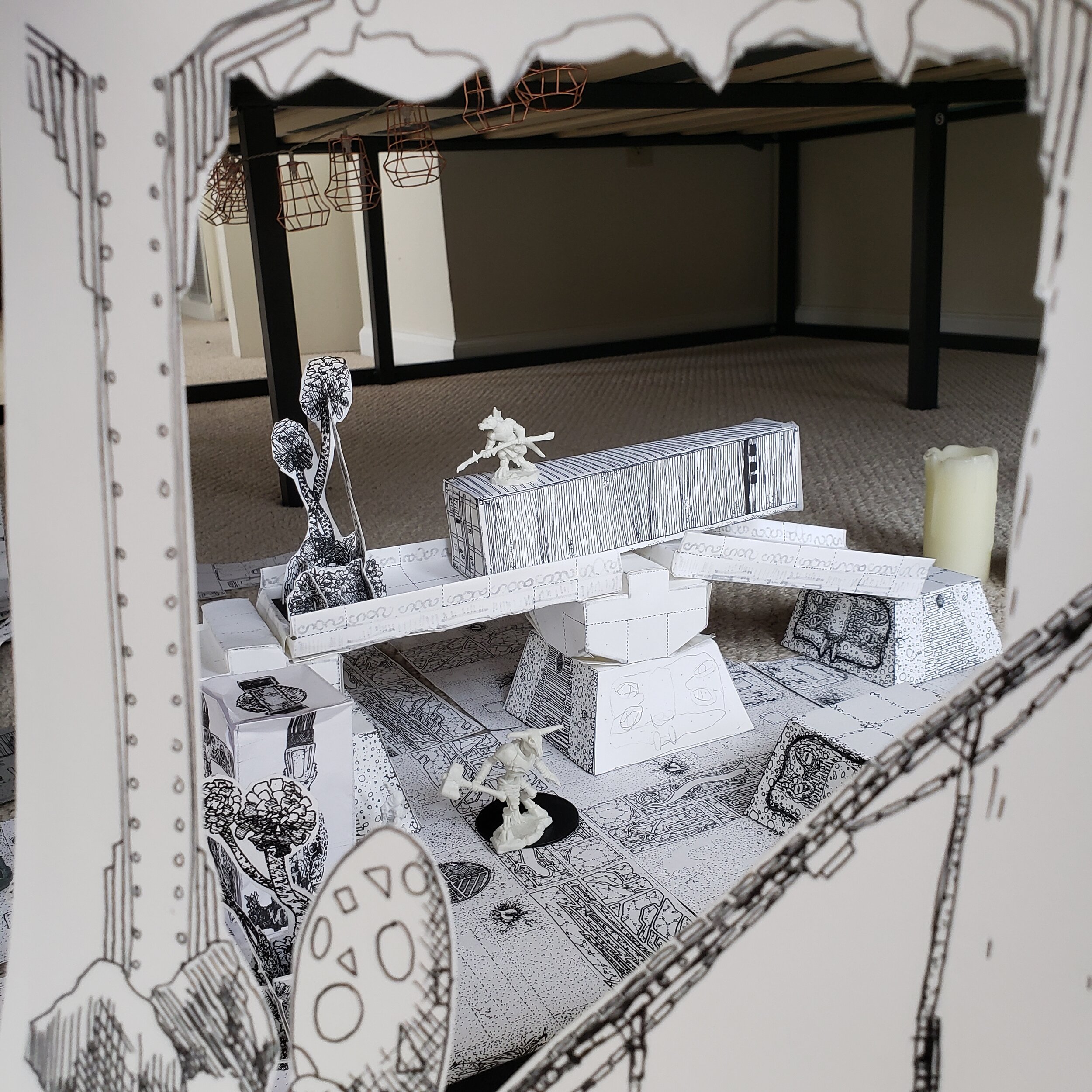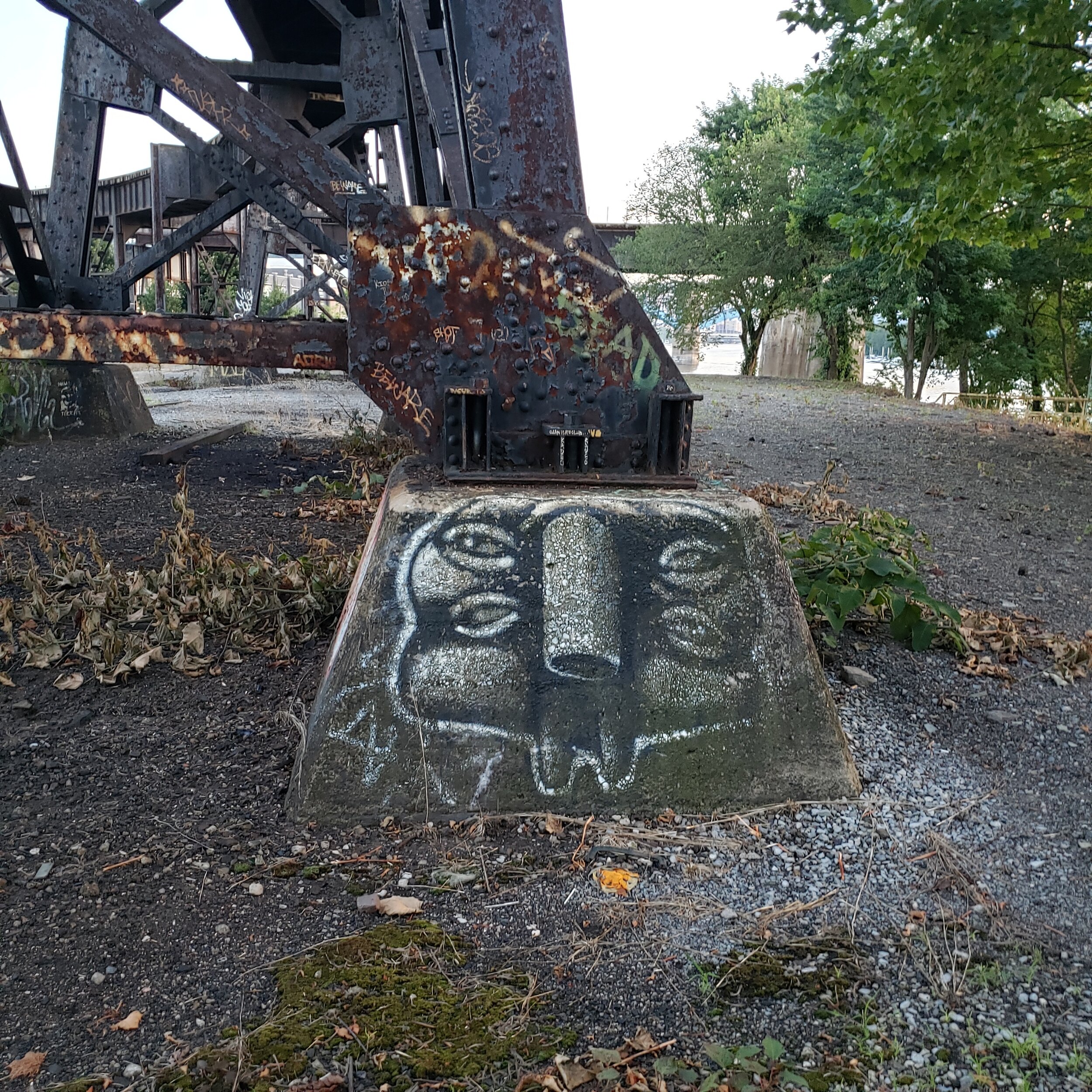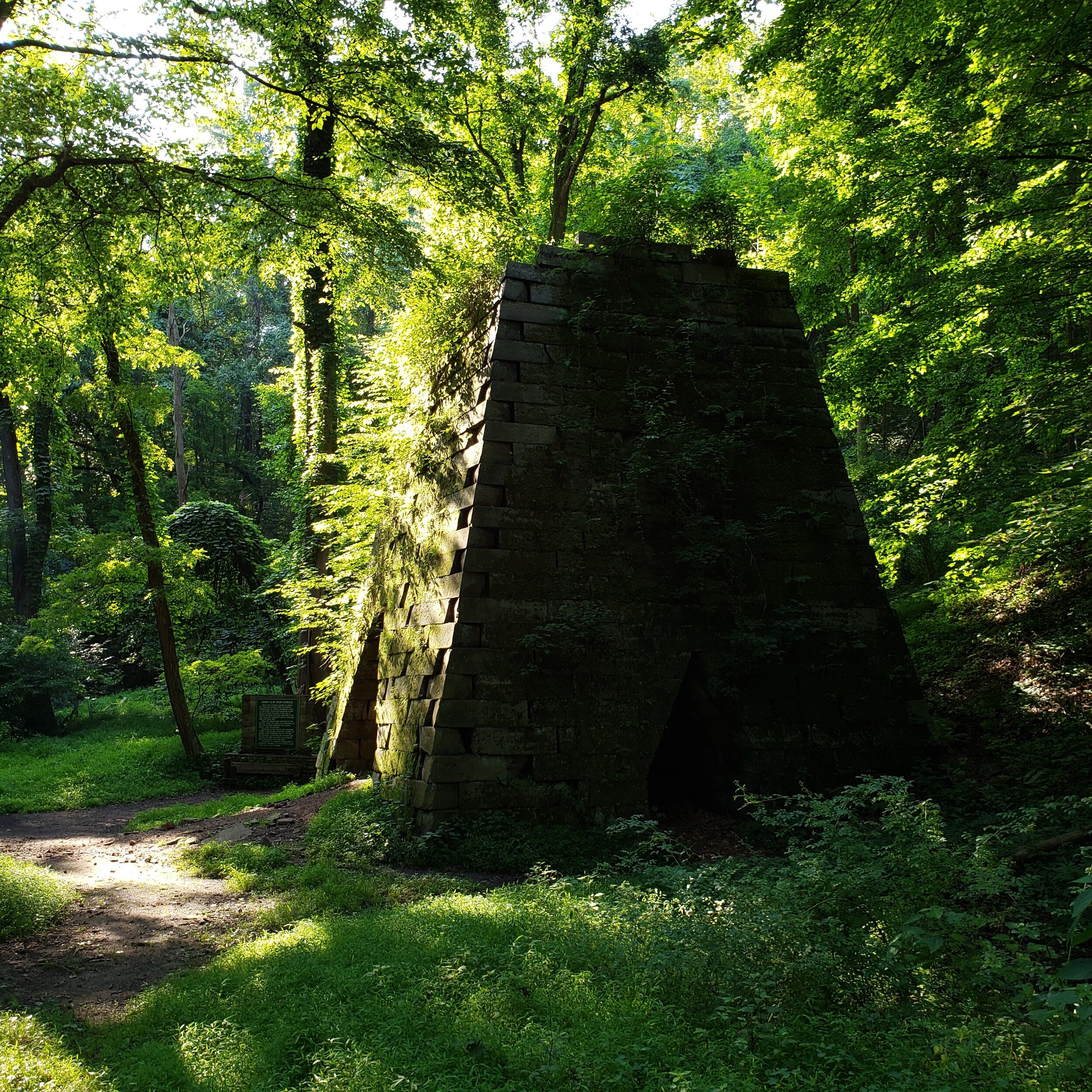Launched November 2019
Concept
The Factory Floor is a miniature environment, composed of paper worksheets which you cut, tape, and assemble at home.
It is the culmination of two threads in my work over the last few years. From one side comes down cartography and map-making, as seen in the maps for Intimate Subjects, Firewalk, and Dead Man’s Hollow. On the other side stand papercraft models, folded and taped and upright, though built from flat worksheets, such as Baleful Botany and the Cetacean Statue.
The Factory Floor is both cartography and territory - it is a tiny paper world, described by and assembled from flat prints of itself.
I envision it as an archetypal workshop space, a vast underground factory-cavern, in the style of cinematic secret factories, marshalling yards, and warehouses. Think Raiders of the Lost Ark, Independence Day, or Treasure Planet.
Appropriate for Dungeons and Dragons and other fantastical games, the factory is lightly themed with salamander and newt-related imagery, as if built by an ancient race of upright amphibians.
Design Goals
This is an art project and a commercial product, and so its design goals are of both an inspired and a commercial, material nature.
A factory floor is determined in some dimensions by the products and materials it is built to handle, and by the industrial standards which its vendors require (loading docks, door widths, rail service, available building materials, etc).
Similarly, the Factory Floor product’s dimensions are determined by our real world standards for printed paper (the medium by which the product is reproduced).
To maximize the product’s salability and commercial viability, printing is black and white, on 8.5 x 11 paper (and potentially A4 paper for European customers).
The paper standard - 60lb white cardstock - is a common weight for covers, sections, and durable worksheets in modern America. It is available as a commodity product, from local vendors, online stores, and many other supply chains. As my art continues, I can fine-tune or localize the paper supply, as I learn more and more about sustainable paper sourcing.
The final product should be salable in person, online (by mail and as a digital product), and in stores, and so it needs to have appropriate trade dress for each of those outlets.
Additionally, the digital product is its own secondary work - a set of digital blueprints which can be printed on demand at home, rather than a kit with a specific numeric manifest. These digital originals needed to stand on their own, as a product of demonstrable value.
When designing for 8.5x11 home printing,, you must keep the must-have design elements within 7in x 10in. Many printers cannot print edge-to-edge, or will mis-register, skew, or print off the edge if they try. Another limitation, related to the print-at-home potential for these worksheets: the art must be black pen-and-ink only, with very little grey in the final product, and certainly no ink-heavy fields of black.
Inspiration // Implementation
I drew inspiration for the Factory Floor from all around my Pittsburgh environment. Between the warehouses, fabrication buildings, cement plant, welding operations, and wholesalers in the Strip District neighborhood of Pittsburgh, there are thousands of material examples steel, brick, and wood commercial buildings, the product of fifteen decades of industry in these river-valleys. Within 100 miles of Pittsburgh, there are industrial ruins from the 1830s forward, as well as sites of human habitation stretching back 16,000 years. Here are a few inspiratory sights, and the papercraft pieces they produced.












